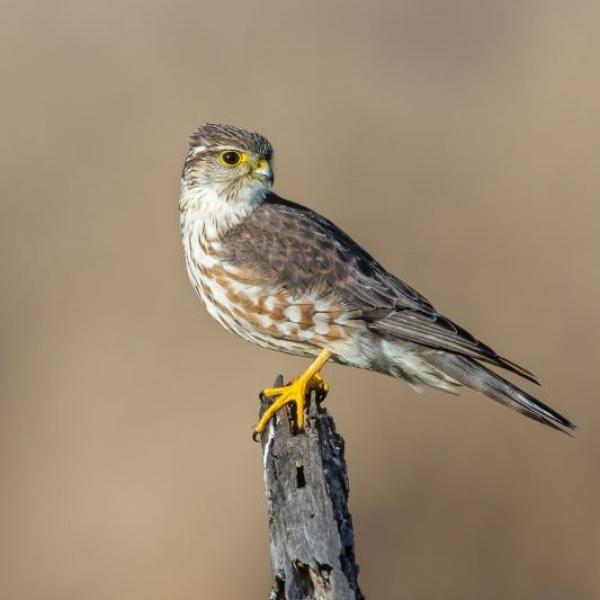Spotter's Guide - Winter Birds
Wrap up warm and see if you can spot these birds when you are walking in the Forest this winter.
The woodcock is a thick-set, pigeon-sized bird with a very long bill. It is found mainly in woodlands and is most active between dusk and dawn. During daylight hours, it likes to hunker down on the Forest floor where its beautiful, multi-hued, brown plumage makes it almost impossible to spot unless it is disturbed.
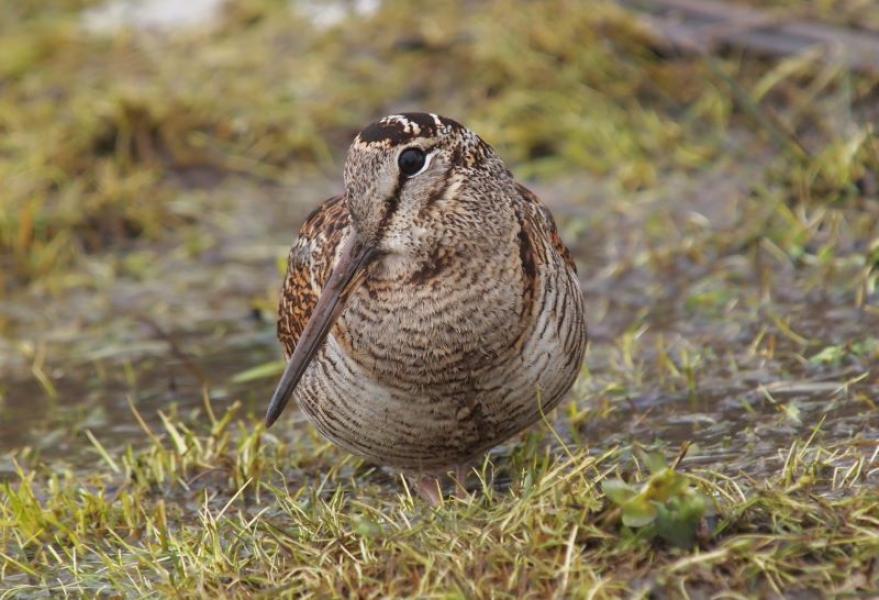
Weighing as little as 10 grams, the lesser redpoll is one of Britain’s smallest finches – only slightly bigger than a blue tit. It is a streaky, brown bird with patches of red on its head and breast, and a yellowish bill. They breed in woodlands so keep an eye out for them around the Forest, especially around birch trees where they flock to feed.
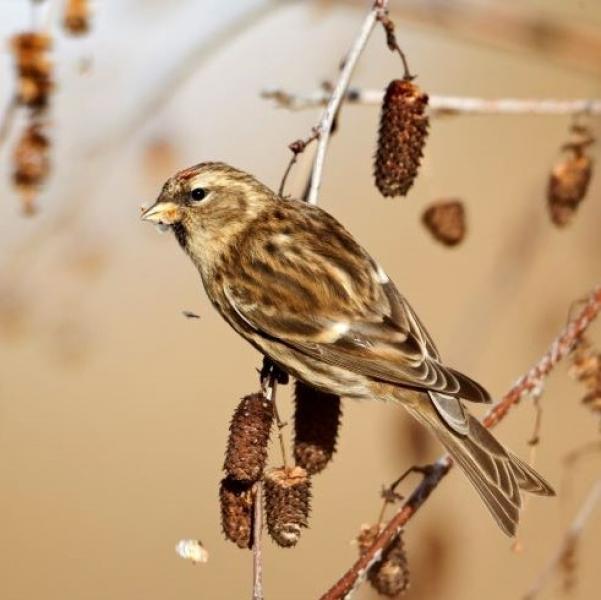
The siskin is a lively, acrobatic member of the finch family, often seen hanging upside down as it feeds on the seeds of alder. The brightly coloured male has a yellow-green streaky body and a black crown and bib. The female sports similar colours – although more muted – but has no black on its head. Slightly smaller than a greenfinch, siskins are very sociable birds that often form small flocks with each other and lesser redpolls during autumn and winter.
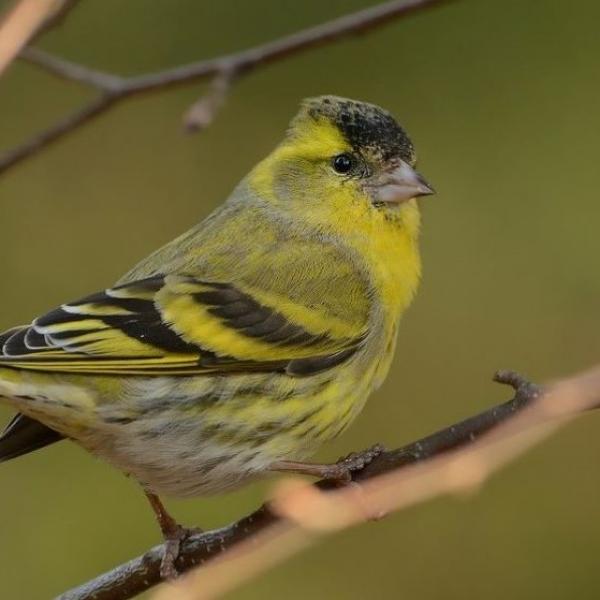
When searching for a goldfinch, look out for its bright red crown, golden back and bright yellow wings. During the winter they can be spotted in flocks from 10-100+ searching for food across the Forest. In particular, they can be spotted pulling seeds out of thistle and teasels in our young plantations with their long, fine beaks. The collective noun for a group of goldfinches is a ‘charm’, which is fitting for these very pretty birds.
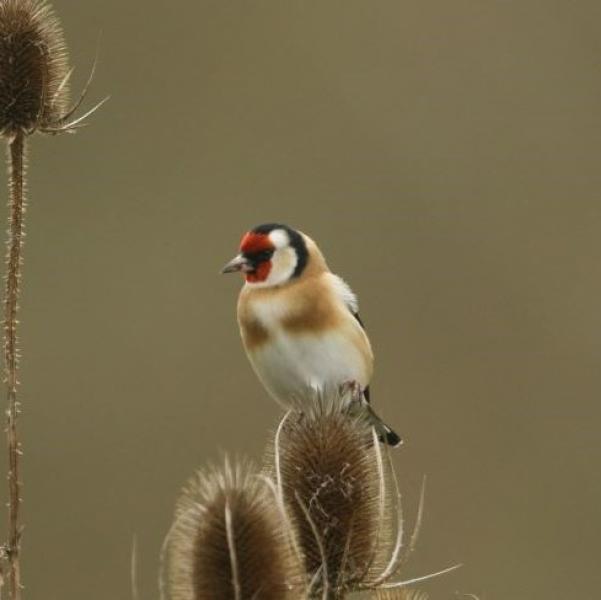
Mainly a winter visitor, the brambling is a chaffinch-sized bird with distinctive orange-buff colouring on its breast and wings. Its favourite food is the fruit of the beech tree (known as mast), and in winter many hundreds of thousands of birds can travel from their native Scandinavia to take advantage of this feeding bonanza in UK woods and forests.
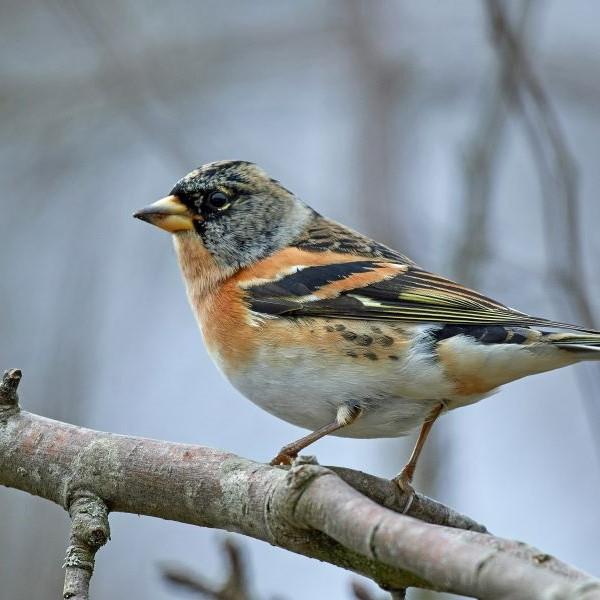
With their distinctive chestnut-coloured heads with broad green eye-patches, male teals are small, attractive, dabbling ducks and the females are mottled brown. In winter, they can be spotted feeding on the surface of wetland areas in the Forest and may well have travelled from as far as the Baltic or Siberia. They are known collectively as a ‘spring’ due to the way a flock can rise almost vertically from the water if startled.
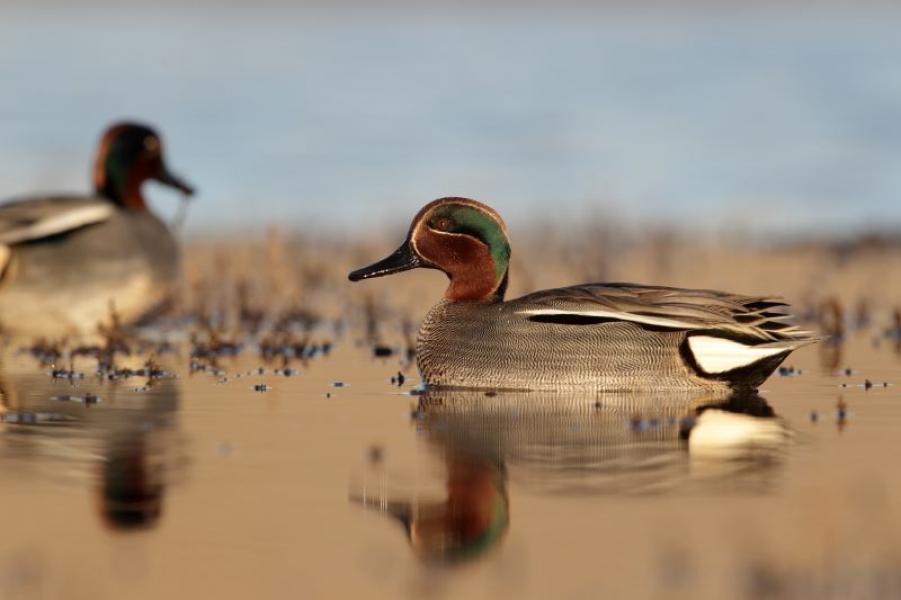
One of our few resident insect eaters, the characterful stonechat is a robin-sized bird that breeds mainly in the South and the West but is much more widespread in the winter months. The male has a striking black head with white around the side of its neck, an orange-red breast, and a mottled brown back. Females are similar but lack the black on their head. It can be seen flicking its wings as it perches on top of small trees, bushes and thistles, making it quite easy to spot.

The UK’s smallest breeding falcon, a male merlin, may be small but it is an agile and ferocious hunter and can catch airborne pray up to four times its own weight. The male has striking blue-grey upper parts with a black-streaked rusty colouring below. Females share similar black streaking but are dark brown in colour. You would be very lucky to see one but these small, elusive predators have been spotted in the Forest at Sheriffs Lench and Newnham.
